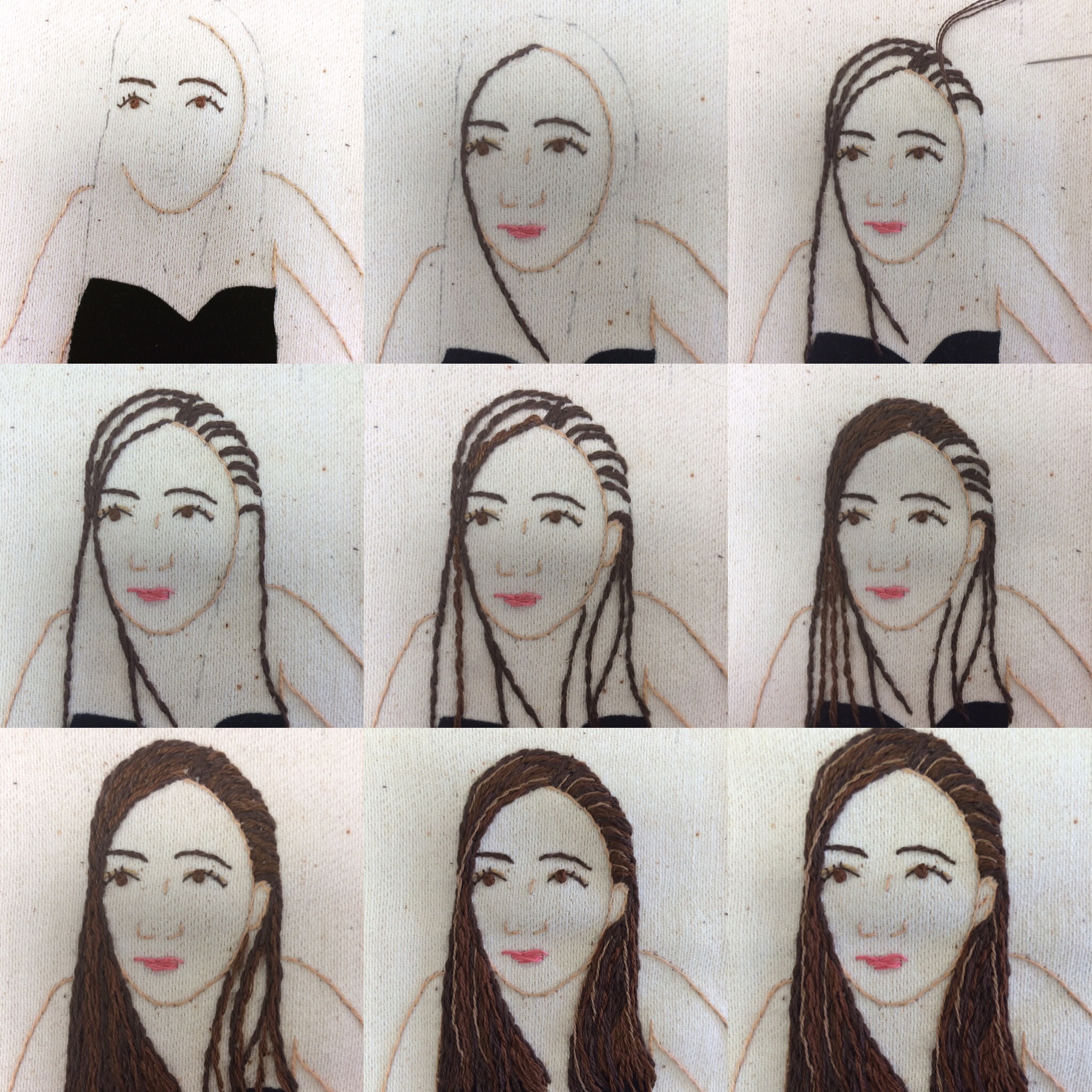Stitching a portrait - in stages....
I have so much fun stitching people and their pets and turning them into mini embroideries. Each one is a fresh challenge and a chance to try and capture a moment in a person's life with thread and fabric.
I think of them as a cross between Victorian silhouette portraits and medieval embroidery. There's that same mix of depicting subjects with slow, steady workmanship.
When I first starting making my portraits I didn't intend to make them exact copies of people or animals. I stitched them with the aim of capturing a likeness of mood or personality. I just wanted them to represent a person or a pet by embroidering their features and hairstyle in quite a simple fashion.
But of course, like most things, the more you do the better you get. I haven't quite reached my "10,000 hours of practice to become an expert', if that much touted theory is to be believed, but I have now embroidered about 100 people and pets and so of course my technique has been honed and I like to think that I can capture a good likeness, simply through the application of a few (well a lot) of stitches!
I start with a photograph. It doesn't have to be anything special - just a snap from a phone is fine, as long as it's fairly clear and sharp. I can do portraits from any angle and if I'm doing a family set, I think they look better if there are different profiles. It makes the end framed picture look more dynamic.
I do a drawing from the photograph which I then re-size to the right proportions. To date, my portraits have all been about 9cm x 7cm. This is because they're all hand embroidered and this size works well with my style of stitching. However I am currently experimenting with larger sized portraits by incorporating paint and different threads, but more of that later.....
Once the design is complete and to size I do a very light tracing onto the background canvas. It's not a complete tracing as I don't like the marks on the material. I just use the dot technique to give me pointers for the first set of stitches.
Here are some pictures which show the gradual growth of a portrait.
The set of the jaw, hairstyle or a strong facial feature always helps me to give the stitched portrait a true likeness.
The same is true with animals - choosing the right coloured threads is important, and choosing a photo which I think will work best with stitch. Having a strong outline which shows the ears, or snout is always helpful. Sometimes, as in the horse or a dog, a side profile works best, but equally a face-on profile can be perfect, especially for cats.
My portraits take approximately 4 hours of continuous stitching although I set aside a day's work as I am very good at getting distracted - coffee needs to be made and drunk, my dog needs attention and walking and my children need food, pretty much constantly it seems. And then there's my husband.....
Each portrait costs £65, unframed. I can arrange framing for them through my local framers in Bristol - Niche Frames. http://www.nicheframes.co.uk
They can be framed individually, or, for a set of family portraits, I like to place them side by side in a long narrow frame.
I'm currently working on a new portrait which I'm going to include in the Portrait Shuffle - an exhibition of portraits organised by Through Our Hands https://www.throughourhands.co.uk to raise money for Save the Children. This portrait has to be A5 in size so, for the first time, I've used paint as a base for the hair and lips in order to help me size up..
It's still a work in progress but I'm hoping it's the start of some new exciting developments in my portrait work - getting bigger and better!








![[PRINTx3] GlozRoad.jpg](https://images.squarespace-cdn.com/content/v1/58ca80df1b631b18af87623b/1495731419673-TT9RPC49R6Y6MMR7T97K/%5BPRINTx3%5D+GlozRoad.jpg)


